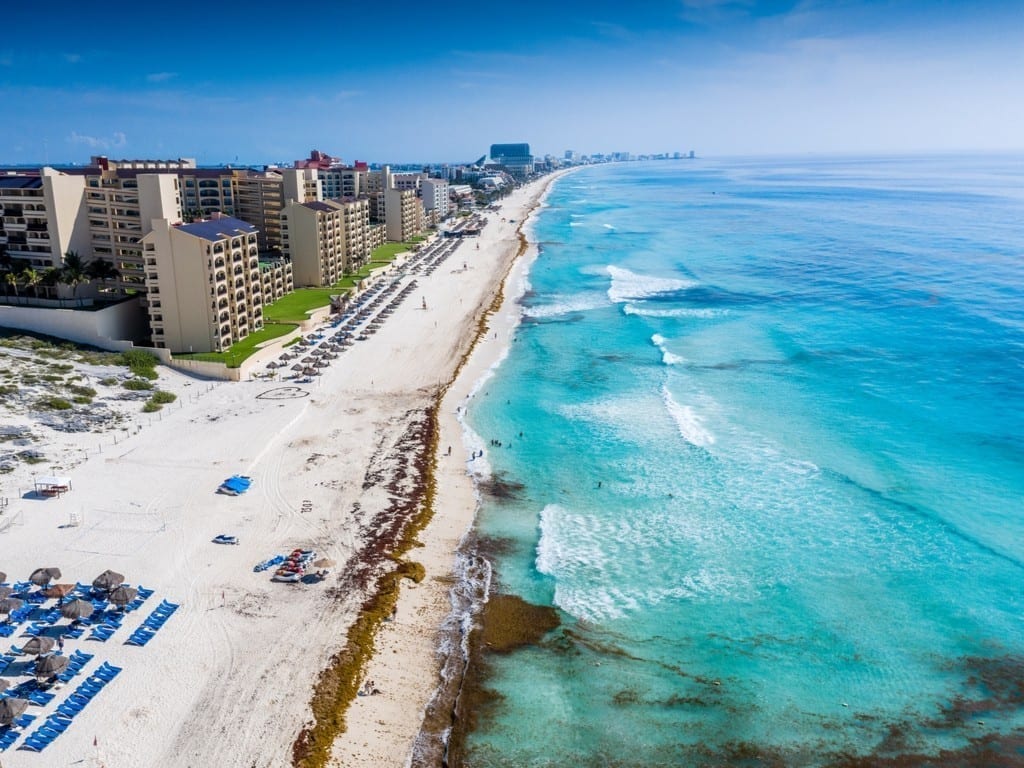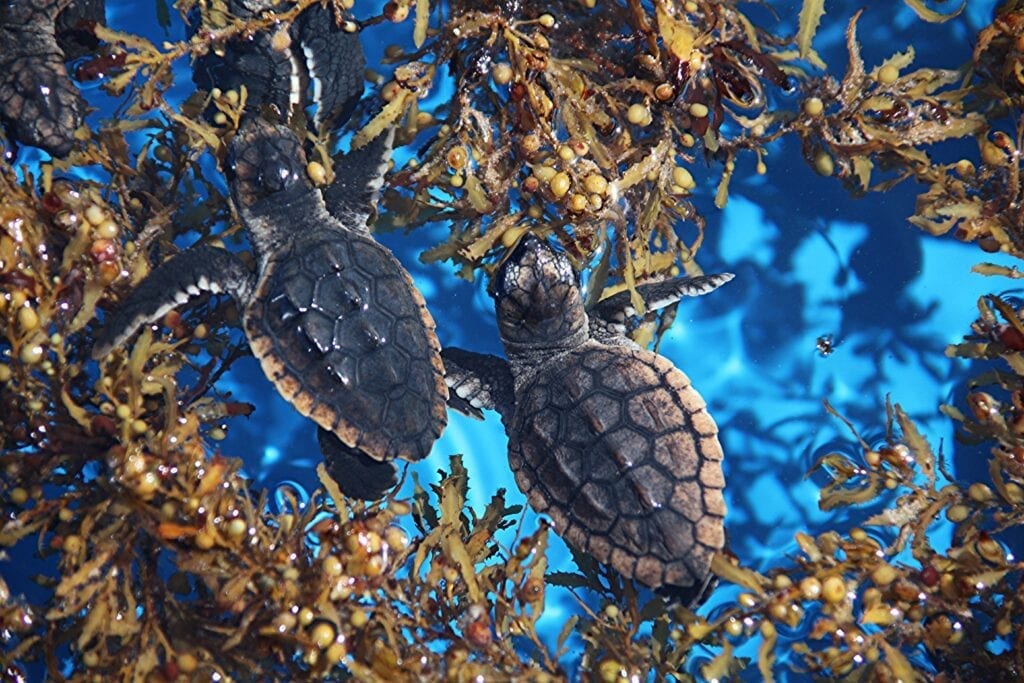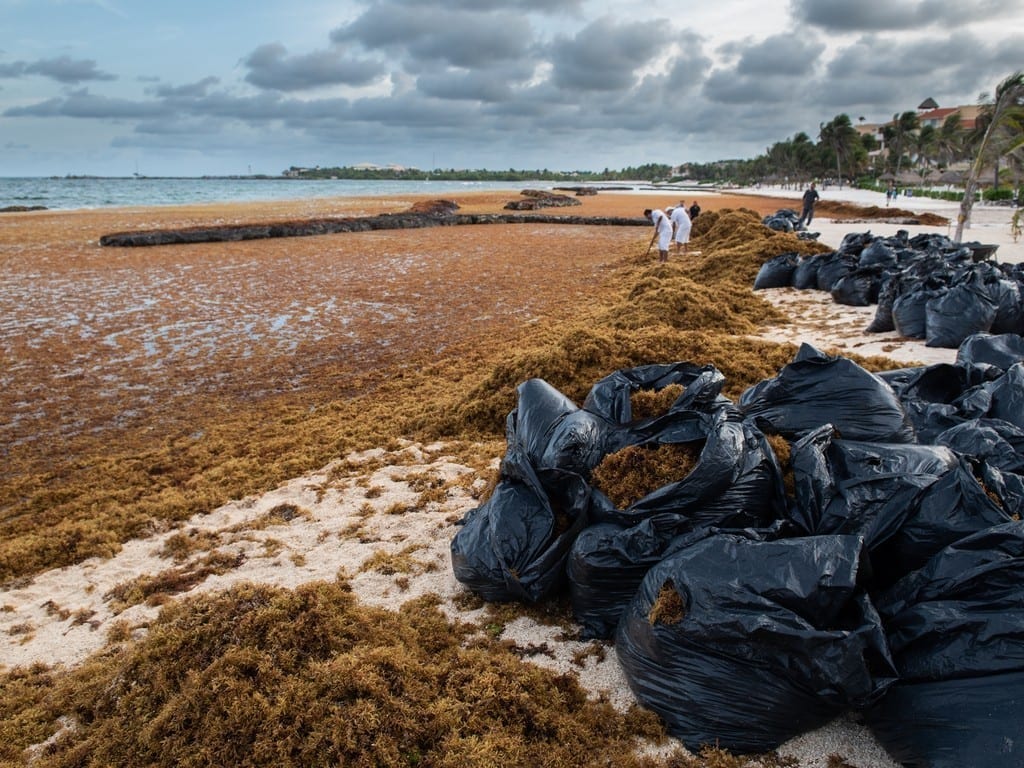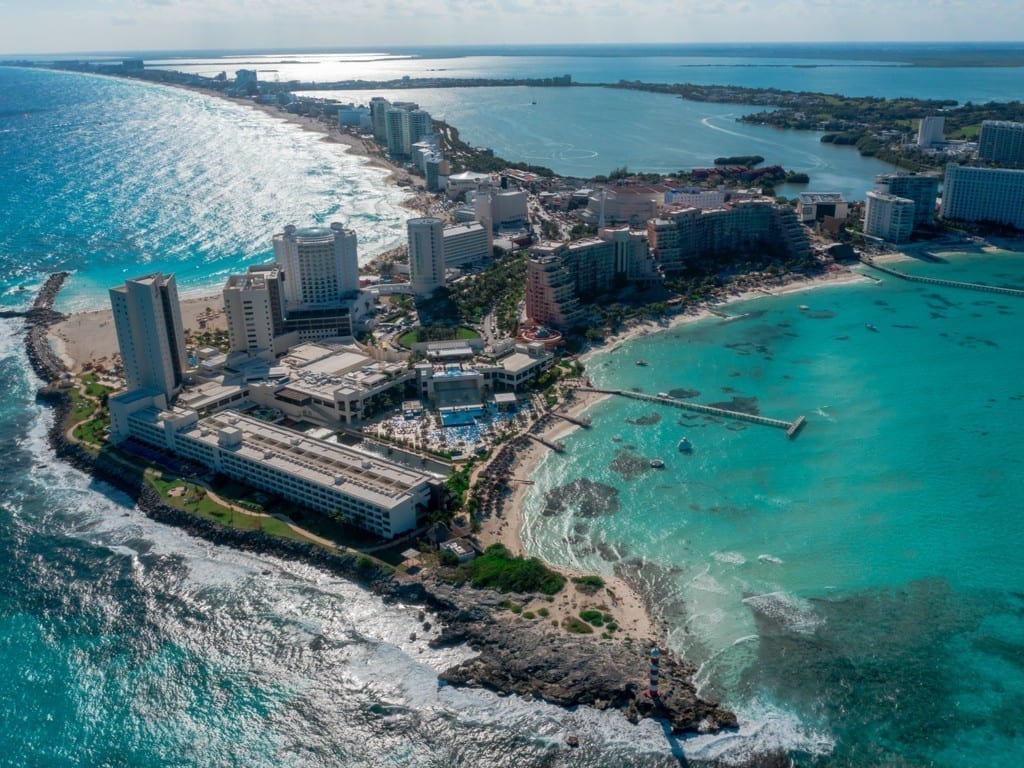When temporary difficulties in the midst of COVID-19 pandemic require extraordinary financial injections, the Mexican tourism sector is seeking solutions to a problem that has already become permanent.
The popularity of Cancún and Riviera Maya, the most highlighted resorts in the Mexican state of Quintana Roo, started in the late 80s and has long been due to their snow-white coastlines and sea waves azure shades. But in 2015, the tourism sector faced a large-scale biological challenge and is still looking for a solution: the beaches were filled with Sargassum brown algae. Reaching the coastline, they decompose, paint the waters in brown, emit hydrogen sulphide and exude an unpleasant odour. During peak periods, when sargassum makes dense layers across the beach and covers the sea surface for some dozens of meters, utilities cannot cope with cleaning and access to the sea is limited. This leads to significant losses in the tourism sector. Just to outline, in 2018, hotel revenues decreased by 40% to 60%, depending on the location relative to the movement of algae. In 2019, tourists also revised their holiday plans, what lead to a 10% -12% drop in hotel occupancy. As to 2020s indicators, it’s hard to make any conclusions due to pandemic restrictions and their consequences.

High reproduction rates and displacement of sargassum attract the attention of the scientific community, where there is still no consensus regarding the causes of these phenomena. As a matter of fact, Sargassum algae have long been studied and were first described by Christopher Columbus in the 15th century. It is to these species that the Sargasso Sea, the zone of their highest concentration, owes its name. Sargassum forms floating colonies, complex marine ecosystems, supporting the life of biological species, from clams and seahorses to large inhabitants of the oceans like turtles, sharks and whales.

There are several hypotheses regarding the abnormal abundance of sargassum in the Caribbean whose growth intensified back in 2011. Both the consequences of industrial activities and solely natural factors are regarded as eventual triggers. The rise in temperature of the oceans, deviations of sea currents and the movement of air masses are the main reference points of the supporters of the natural factors of the Sargasso issue. Among the justifications for the human-caused nature, versions vary: increased concentration of fertilizers and nutrients in agricultural run-offs from the Amazon, tropical deforestation, industrial and organic waste pollution of regional rivers, as well as the massive oil spill caused the accident at BP’s Deepwater Horizon drilling platform back in 2010.
Also, sargassum algae growth has its cycles and seasonality: observations confirm that maximum activity is showed during the warm season from April to August, but accurate forecasts cannot be done. The extent of the damage and losses of the travel industry varied over the years, peaking in 2015 and 2018. Regional authorities and local businesses are forced to deal with the problem on the spot, guided by short-term monitoring data and constantly looking for efficient solutions.
The unpredictable sargassum phenomenon has significantly affected performance of the tourism industry in the Mexican Caribbean, both in years of massive and moderate arrivals of the seaweed. The number of travellers reconsidering their plans for a holiday in Mexico, opting for alternatives on the Pacific coast, has considerably increased. Experts from the BBVA financial group have noted a steady raise in tourist traffic and commercial activity in Los Cabos, Rosarito, Manzanillo, Puerto Vallarta and Ixtapa. With a 4 to 6 points annual decline in economic performance indicators of Quintana Roo’s tourism sector over the past three years, these resort areas are showing a constant 3% to 4% growth, even amid average drops in accommodation and related services prices.
Despite that tourism contributes to some significant 9% of the national GDP, Mexican federal authorities don’t address the environmental problem, even though the welfare of several regions highly depends on indicators of the tourism industry. Quintana Roo, the state that suffered most from the invasion of the sargassum, relies on travellers: about 40% of jobs are concentrated in the tourism sector that provides over 50% of regional budget revenues. Under these conditions, state authorities are forced to deal with the problem on their own, since one-time supports from Mexico City in 2015 and 2018 could only cover 10% of the cost of removing almost 550 million tons of seaweed that reached the coast in these periods.

Installation of coastal barriers and regular cleaning are the key methods applied in the struggle to keep clean the beaches of Cancún and the Riviera Maya. However, it is obvious that they are addressed to deal with the consequences and not the causes of the problem. Also, there are initiatives proposing to use sargassum to produce bioplastics. Still, these projects’ efficiency remains questionable, considered the capital expenditures and the unpredictability of annual volumes of the ‘feedstock’.
Apparently, this anomaly shall concern not only Mexico. Being a complex environmental problem, it requires joint efforts of authorities, scientific communities and businesses outside the Caribbean. According to marine professionals, the consequences of rapid spread of this biological species may affect both the countries of the American continent and the west coast of Africa reframing their economic patterns.

